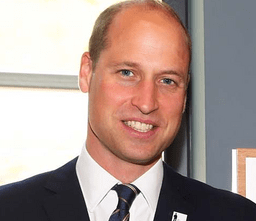Expert fears implications of Prince William’s purported strategy to streamline the Royal Family, citing recent trooping of the colour event as indicative
Prince William‘s plans for the future of the Royal Family came under scrutiny following the Trooping the Colour event, where a visibly reduced balcony lineup at Buckingham Palace hinted at a shift in royal traditions. The event marked a significant appearance for Kate Middleton, making her first public outing since announcing her cancer treatment. Accompanied by Prince William, the Princess of Wales radiantly joined other senior royals including King Charles, Queen Camilla, Princess Anne, Vice Admiral Sir Timothy Laurence, and the Duke and Duchess of Edinburgh with their daughter Lady Louise. Notably absent were several minor members, who were reportedly asked to stay out of sight, raising questions about the monarchy’s future public representation.
Royal expert Richard Eden expressed concern over this scaled-back approach, pointing to the solitary figure of the Duke of Kent, traditionally accompanied by his extended family on such occasions. In contrast to previous years where the balcony overflowed with minor royals, this year’s sparse display indicated a departure from celebratory inclusivity.
Embed from Getty ImagesEden highlighted insights purportedly gathered from sources close to Prince William, suggesting a strategy to further reduce the number of full-time working royals in the future. “When the older members of the family retire, His Royal Highness won’t be inviting anyone else to become working royals. It remains to be seen if he will even want his two younger children to be working royals,” Eden reported, reflecting a potential shift towards a more minimalistic monarchy model.
Analysis:
Political: Prince William’s vision for a streamlined Royal Family reflects a strategic approach to adapt to modern political expectations. By reducing the number of working royals, William may aim to align the institution with contemporary governance ideals, emphasizing efficiency and relevance in the public eye.
Social: The scrutiny over Prince William’s approach underscores broader societal debates on the role and relevance of monarchy in the modern age. The decision to limit public appearances of minor royals may signify a shift towards a more focused and consolidated image, resonating with societal expectations for transparency and accountability.
Racial: While not directly racial in nature, the implications of a streamlined monarchy could influence discussions on inclusivity and representation within British society. The selective visibility of royals may inadvertently reflect on issues of privilege and access to public platforms, prompting conversations about diversity in leadership and representation.
Gender: The potential exclusion of minor royals from public engagements raises questions about gender dynamics within the monarchy. Historically, royal roles have been influenced by gender norms and expectations, and any changes in public representation could impact perceptions of gender equality and familial duties within the institution.
Economic: From an economic standpoint, a streamlined monarchy could have implications for tourism and public engagement revenues. While a focused and efficient royal family may appeal to modern audiences, the reduced visibility of minor royals could impact cultural tourism and related industries that benefit from royal patronage and public appearances.
